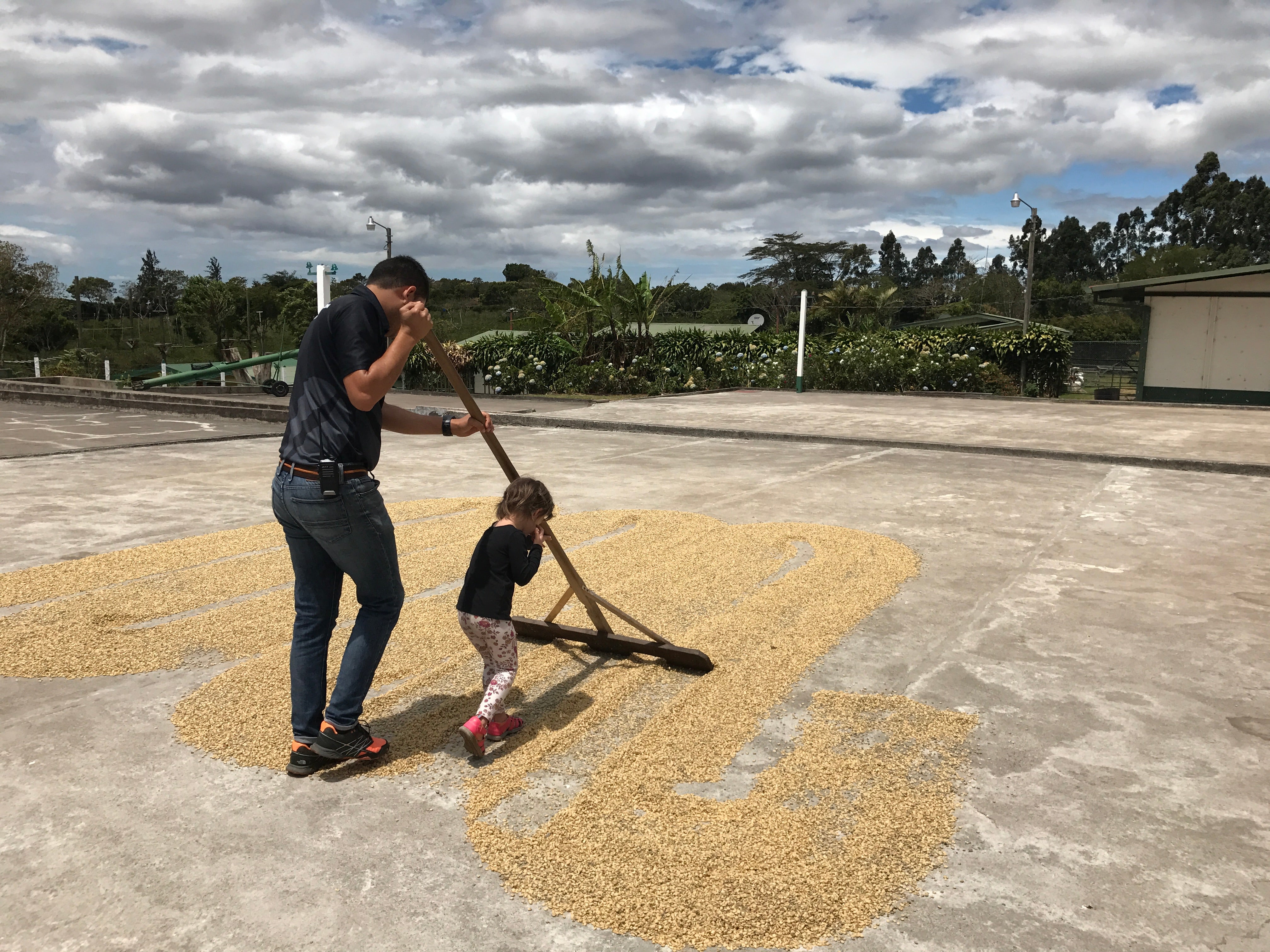Even before Snowy Owl Coffee Roasters was a pipe-dream, our love and appreciation for Costa Rican coffee was strong. When we were designing our signature blends, before we opened the doors to our first cafe in Brewster, there was no question that Costa Rican coffee would be a huge component of what we wanted to offer our Cape Cod community. Sourcing from Costa Rica was a no-brainer: everything we tried from that country was consistently delicious. It was a coffee that was plentiful in availability with minimal defects. As such, two of our three single-origin blends, the Jaws and the Captain Crosby, were designed around the clean, bright, and sweet notes characteristic of Costa Rican coffee.



(Photos by the local legends Organic Photography)
In 2017, we paid a visit to growers in Tarrazu and Guanacaste, making unforgettable memories with our young daughters in the mountains of Costa Rica. Experiencing the “first rain” of the season outside Dota and seeing our daughter react to her first taste of a coffee cherry were moments we’ll always treasure. (She doesn’t remember, but we do!) The professionalism and warm hospitality we experienced from coffee professionals there were unparalleled.






There is no doubt that Costa Rica’s coffee industry, guided by generations of knowledge and experience, knows how to produce outstanding coffee, despite the growing challenges of climate change. And there is no doubt that some of the best coffee on the market today is from Costa Rica.
However, after much deliberation, we’ve made the difficult decision to no longer use Costa Rican coffee in our blends. The reason is simple: it has become too expensive and too limited in availability. We want to keep our signature blends affordable and accessible for all of our customer base, while continuing to offer higher priced coffees in the form of single origins. But as detailed below, the prices of Costa Rican coffee continues to rise, and access to large quantities of crops, which we need for our blends, is limited. (This led us to switch to equally incredible coffee from Nicaragua more on that HERE!).
Why Is Costa Rican Coffee More Expensive Now?
The Costa Rican coffee sector has undergone significant changes in the past decade. As one of the most stable and developed nations in Central America, Costa Rica has benefited from economic growth, a strong education system, a peaceful political environment, and technical innovation, allowing the country to lead in sustainability and traceability in coffee production. Costa Rican coffee is synonymous with high quality and specialty coffee, with coffee from every growing region consistently standing out on cupping tables.
The challenges faced by the Costa Rican coffee sector are, in many ways, a product of its own success. Let’s explore a few key factors that have shaped output in the past decade:
- Labor Costs: Costa Rica’s focus on high-quality, specialty coffee has led to increased production costs. As the economy has developed and living standards have risen, so too have wages. Costa Rican labor costs are much higher than in neighboring countries like Nicaragua and Honduras, making it harder for Costa Rican coffee to compete in global markets.
- Sustainability Costs: Costa Rica is a leader in environmental sustainability, with many coffee farms adopting *organic* and *eco-friendly* practices and the expensive certifications that come along with theses practices. While this enhances the country’s reputation, it also drives up production costs, further impacting the affordability of Costa Rican coffee in international markets.
- Aging Workforce: The coffee industry is also facing an aging farmer population, with fewer young people entering the industry. Despite Costa Rica’s success, the younger generation sees fewer incentives to take up coffee farming, which remains labor-intensive and costly and inherently risky. The opportunities to pursue careers in more stable industries are plentiful in a place like Costa Rica, unlike in neighboring countries or in many coffee source countries around the world.
- Labor Shortages: Historically, Costa Rica has relied on migrant labor, especially from Nicaragua, for the labor-intensive task of coffee picking. Stricter immigration policies and rising labor costs have led to labor shortages during harvest times, which increases production costs and impacts the profitability of farms.
- Shift to Coffee Tourism: Costa Rica’s growing coffee tourism industry has been a positive source of income for many farmers, with coffee farm tours and eco-tourism experiences gaining popularity. And as a result, some farmers have shifted their focus from coffee production to tourism, which can reduce the overall coffee output.
Farewell For Now But Not For Long
While Costa Rican coffee remains among the best in the world, the increasing costs of production and reduced output have made it more challenging for us to include it in our signature blends, which we offer all year long, while keeping our prices accessible. Costa Rica’s success in creating a sustainable, high-quality coffee industry is undeniable, but that success has also contributed to the rising costs we and other roasters face today. For now, we’re proud to offer an exceptional alternative from Nicaragua in our blends. And this transition has allowed us to form a relationship that we are so thrilled to announce with Finca Mirasol!
We look forward to continuing our journey with Costa Rican coffee, even if it’s in a slightly different form. Costa Rican coffee will always have a place in our hearts — and on our shelves as single-origin offerings.
Sources: Coffee Intelligence, Daily Coffee News





